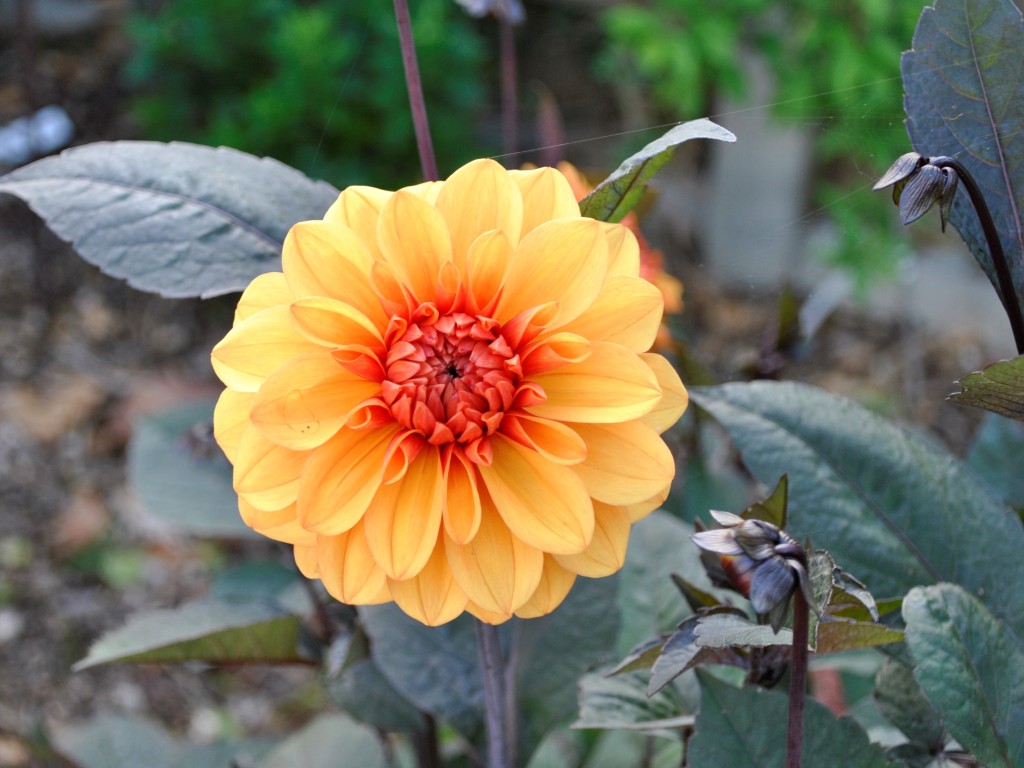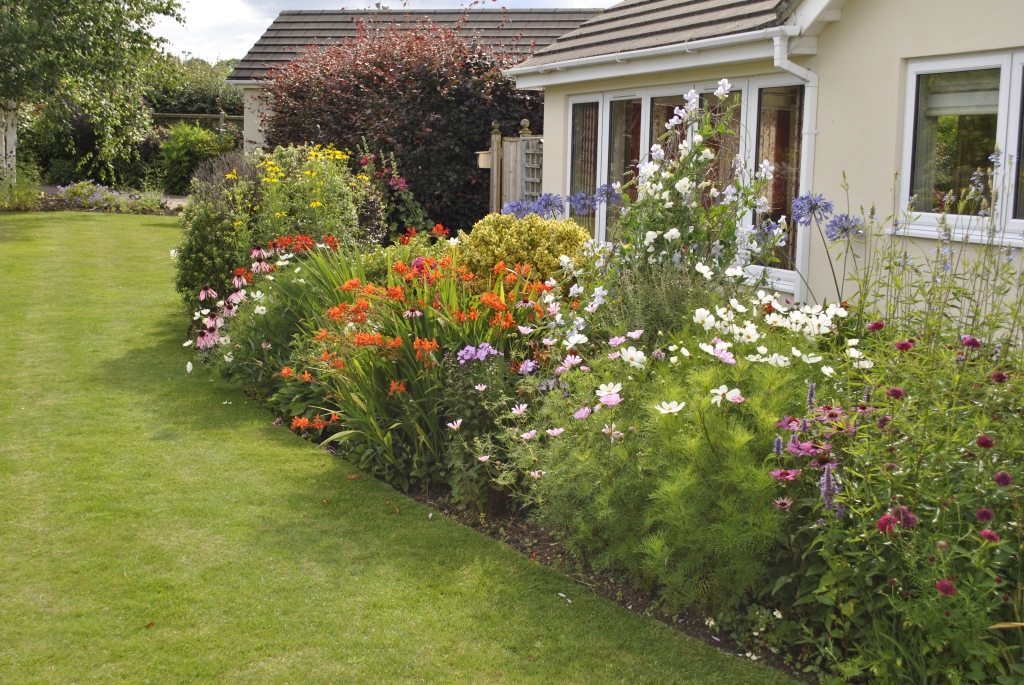Just back from a few days in Yorkshire and, despite the torrential rain at times, enjoyed the change of scenery. Very impressed with Ilkley where we stayed, such a well kept riverside town with absolutely no litter, clean and tidy streets, busy independent shops and friendly people. Good municipal planting too although a little regimented for my liking!

I came back to the first flowers on Dahlia ‘David Howard’ AGM, a sturdy variety with burnt orange flowers on long stems rising from purplish bronze foliage. Keeps its heads up even in rain. I believe they call this type a water lily dahlia and you can see why.

First blackberries picked yesterday. Another wonderful crop of ‘Merton’s Thornless’ which makes tying in and collecting fruit so much less painful! I will be picking them for several weeks as many are still green and there are even a few flowers left to pollinate. The granddaughters will enjoy a spot of fruit picking during the holidays! Washed and simmered on the hob for ten minutes, they will be on my granola tomorrow!

Very tricky to get a good shot of Salvia uliginosa but thought this was worth featuring to encourage others to grow it. Tall, and ethereal, the gentle movement in the slightest breeze adds movement to the border, but the thicker square stems at the base prevent bending and snapping, even in strong winds. Adored by bees which puncture the flowers to get at the nectar because the flowers are so small. I imagine they are attractive to hummingbirds in their native South America.

I am always impressed with the flower power of Lobelia and just six little plugs of alternative blue and white have filled this pot, completely surrounding the stem of the standard rose above. Not particularly exciting, different or special, just a pretty thing.

I think Liatris spicata is an underused summer flowering bulb. They come in purple and white and are very hardy and reliable. Just plant and forget. They flower for several weeks. opening from the top down so you don’t get that ugly brown spike of dead flowers beneath. Bees absolutely love them and they are as cheap as chips to buy. Highly recommended.

Finally, a shot of the front border which is looking good at the moment with everything in full bloom and standing upright!
Have a great weekend
David













